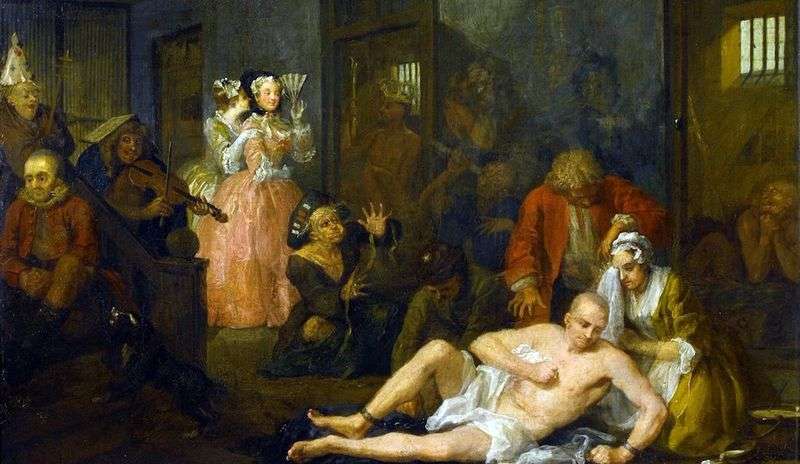
In the first half of the XVIII century. the development of English fine arts is very contradictory. Against the backdrop of a huge number of faceless imitators working in the genre of a ceremonial portrait, only a small number of true masters can be distinguished. Among them, first and foremost, the name of William Hogarth, who rightfully is considered the founder of the national English school, should be mentioned.
It starts with the fact that Hogarth is one of the first in British painting, on whose canvases not the biblical scenes come to life, the etudes are not full of symbolism, and everyday English life is what it really is, without embellishment, full of joyous and tragic events. Appeal to national sources was due to the fact that the artist wanted to capture the contemporary society, that is, the society of which the viewer is a part.
Beginning his career as an illustrator of books, Hogarth often watched as domestic collectors are more likely to buy paintings of Italian or Dutch masters, and dreamed that their native art would someday be no less in demand. And now, a few years later, Hogarth is taking the first steps towards the development of national English traditions within the framework of the fine arts of his native country.
But he still had to answer the most important question: what is art for? From the answer depended the future of all his undertakings. And Hogarth finds the right answer. Art for him is a mirror of everyday life, during which certain truths are revealed. In other words, the artist on his canvases expresses ideas about the fatalities of vices and the usefulness of virtues. A domestic scenes – a clear confirmation of that. In the Hogarth paintings, the viewer observes what the vice leads to and how virtue turns out to be a virtue, why one person ends his life in poverty, and the other – in peace and prosperity.
In painting, Hogarth works on the theatrical principle. One story he breaks into several acts, each action unfolds on a separate canvas. Then the pictures, united by a single idea, the artist adds to the series, and the whole story of this or that vice unfolds before the viewer. Hogarth created several such series: “The career of a prostitute”, “Career Mota”, etc. Life appears under the brush of Hogarth in all unsightly truth, and the flaw is completely exposed.
The most famous of the series created by the artist is “Career Mota” and its final chord – “Mot in Bedlam.” The painting is one of the most powerful works of Hogarth within the framework of that direction of art that seeks an objective display of life in all its tragedy. Moth dies in Bedlam – a shelter for the insane. He lost his mind, he lost his fortune, he lost everything. There is not next to him and those whom he considered to be friends, and only one person sincerely mourns his death – a girl whom the moth once left.
Further, Hogarth concentrates on the canvas all varieties of insanity. In the background, the viewer sees a religious fanatic, a man who lost his mind on the grounds of megalomania. Another madman draws a card on the wall, and the blind man looks at the telescope tube.
Symbolical and three figures at the stairs – a grinning violinist, a singer in an idiotic cap and a man timidly looking somewhere to the side. The whole action unfolds, accompanied by caustic comments of the dwarf and mocking glances of secular beauties who knew the moto in his former life. And this is all – life, one of its many manifestations. And all this could have been avoided if the moth had not sold his soul to vice.
Hogarth is a wonderful storyteller. However, the edification of the picture does not suffer. The composition plays a great role here. The main group of people the artist placed on the right foreground, making a choice in favor of diagonal construction of space.
Hogarth was always convinced that smooth lines are preferable to straight lines or broken lines. Ideological accents are arranged with the help of the play of light; from the general dark background, the painter snatches out the figures of a moto mourning his girl and two ladies. Life is represented in its essence – a tragic collision of human drama and ruthlessness of society.
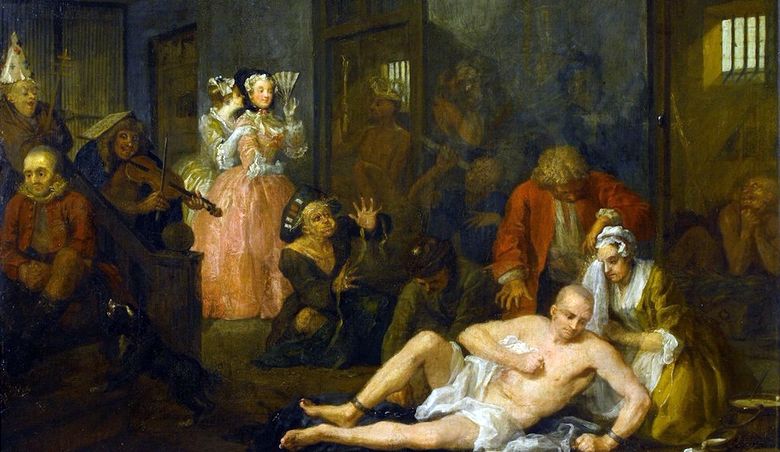 Carrière Mota. Bedlam Mot – William Hogarth
Carrière Mota. Bedlam Mot – William Hogarth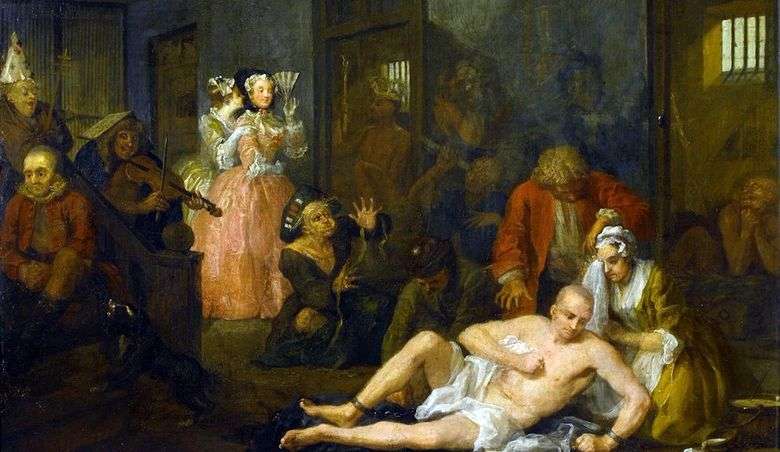 Carrera Mota. Polilla en Bedlam – William Hogarth
Carrera Mota. Polilla en Bedlam – William Hogarth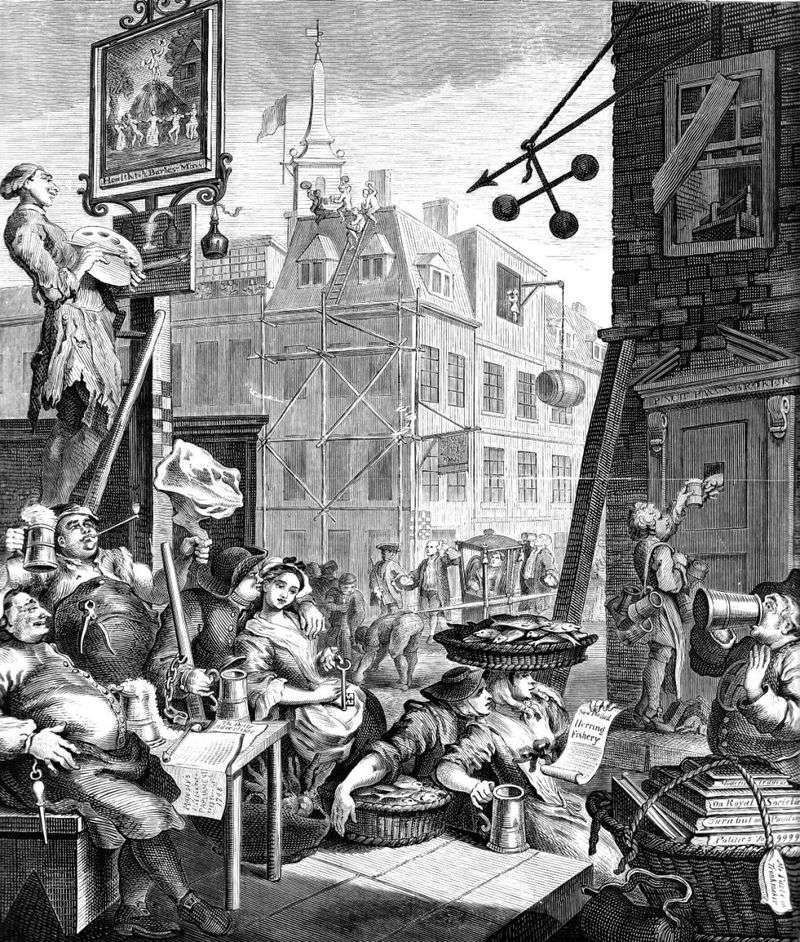 Piva Street by William Hogarth
Piva Street by William Hogarth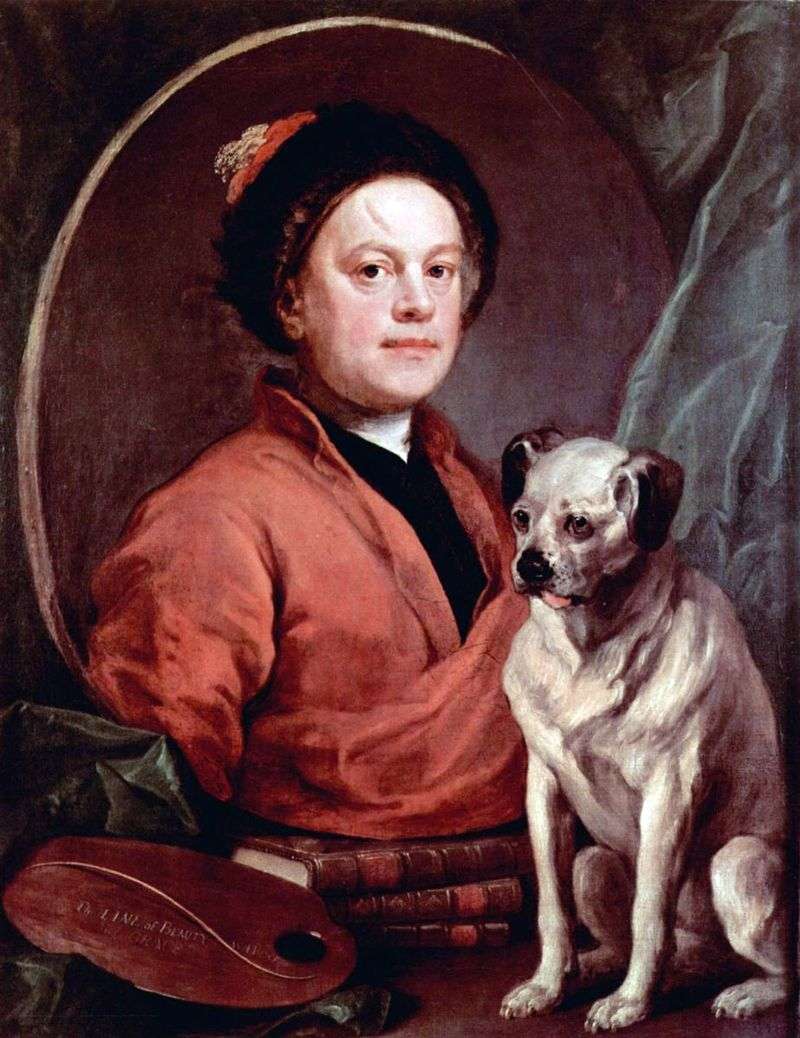 Self-portrait with a dog by William Hogarth
Self-portrait with a dog by William Hogarth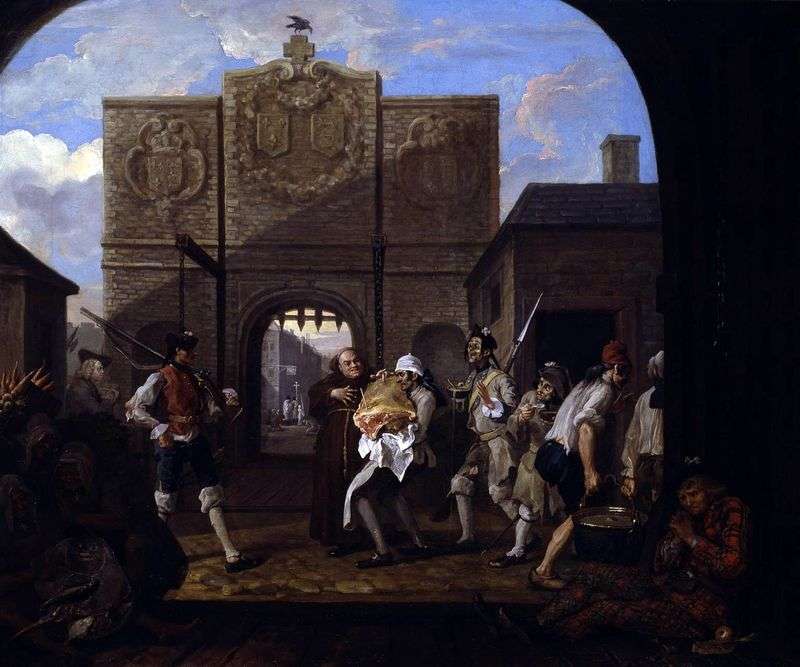 Gates of Calais, or O, roast beef of old England by William Hogarth
Gates of Calais, or O, roast beef of old England by William Hogarth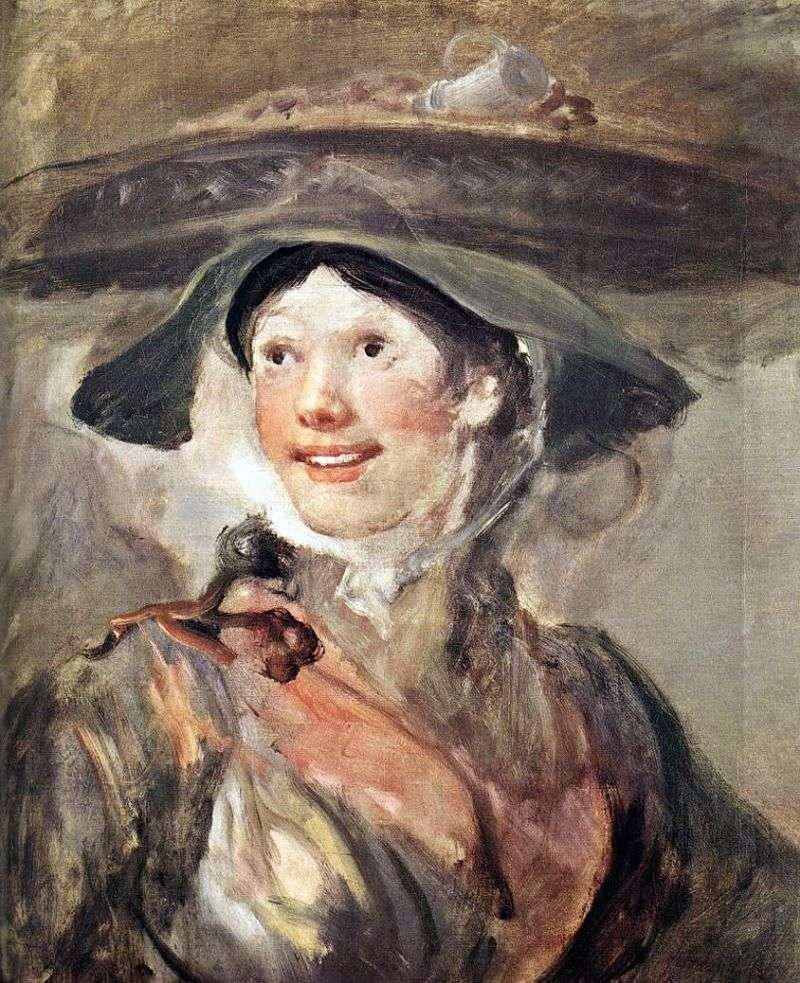 Girl with shrimp by William Hogarth
Girl with shrimp by William Hogarth Marriage a la Mode by William Hogarth
Marriage a la Mode by William Hogarth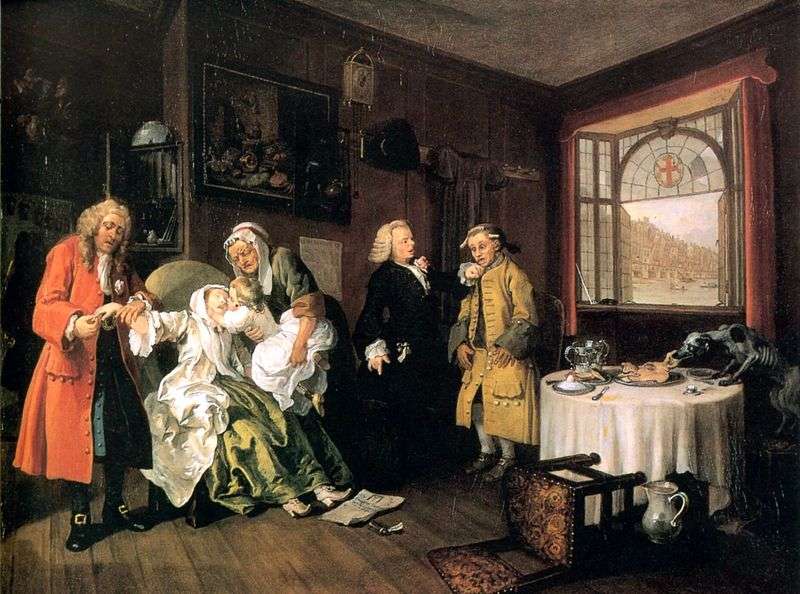 The Countess’s Death by William Hogarth
The Countess’s Death by William Hogarth